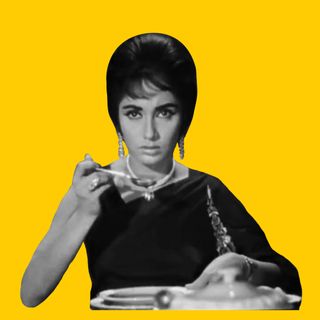
Miss Universe Isn’t Better For Allowing ‘Plus-Size’ Contestants
Beauty standards are still beauty standards.

Surrounded by enduring questions about its relevance in this age, the 2023 edition of Miss Universe opened its doors heralded by a new leadership at the organization helmed by transgender activist Anne Jakkaphong Jarajutatip. The pageant hosted in El Salvador is being touted as the most “special and inclusive” of all pageants by several news headlines. The cohort of participants this year hailed from 84 countries across the world and boasted of diversity among its women.
Featuring contestants like Miss Nepal Jane Dipika Garret, whose presence was deemed “a big win for all plus-sized” women, Miss Pakistan Erica Robin, the first woman from the country to compete, who wore a burkini in the swimsuit round, two trans woman (Miss Portugal Marina Machete and Miss Netherlands Valerie Kolle), and two mothers, the pageant attempted to revamp itself in an evolving cultural landscape.
Although this seemingly progressive move ticks several boxes from the modern feminist rulebook, the move is hardly revolutionary enough to undo the historical legacy of the patriarchal enterprise.
“In the realm of beauty, the body is the object of female labor which is produced, presented and branded through entrepreneurial efforts,” argues a piece on OutlookIndia.
The cultural institution of pageants – fraught with an aesthetic ideology of beauty, within the scripted format of the platform, anticipated template-like answers lacking in nuance, and homogenous takes on humanitarian issues – has always been painted as the symbol of women empowerment, inspiration, courage, and philanthropy. Although the decision of the committee to reconsider its practices is being advocated as a “force of good,” does platforming a new set of women who are arguably closer in resemblance to its audience count as true representation? Or is it simply an attempt to resuscitate the pageant’s declining relevance?
Feminist scholars have long condemned pageants based on the categories that rank woman based on “intelligence,” “creativity,” and “conviviality.” Further, the narrow and universal value these contests place on a woman’s life-purpose, situated within the “beauty with brains” trope, has been criticized for being ridiculously infantilising and dehumanizing. It only serves to pacify the male fantasy, desirous of an upgraded version of the typical “trophy wife” – hinged on the fragile balancing act of smart and sexy.
The attempt of this year’s organizers to be more politically correct allowed the representation of a plural instead of a singular definitive identity of femininity to take up space. It may look promising at first glance, but it feels neither liberating nor reformative, going by the audience reception which laid bare its orthodox patriarchal origins. After the announcement of the winner, several on social media breathed a sigh of relief, rejoicing in the “crowning of a woman” – a thinly veiled diss at the presence of the two trans contestants. Comments about Miss Nepal contesting included comparisons with Miss Netherlands (one of the two trans women contestants) and validating her further for “being female,” “proportionate,” and thus still worthy of being celebrated. This insidious ranking system, pitting women against women, is nothing new to the industry which has been called out for its toxicity, forcing women to get body modifying surgeries, and enabling eating disorders for generations of women.
Moreover, the pageant departing from its customary criteria to invite such women – traditionally unpopular and non-conforming to the standards of the beauty industry – feels like a consolation prize being handed to the women who have been historically shamed, mocked, rejected, and marginalized by the very industry.
For one, how pageants define “plus-size” continues to put certain bodies outside the norm, which still remains thin. For another, pageants end up perpetuating the idea that there is a right way to be “plus-size,” “womanly,” and “attractive,” which still continues to redraw the boundaries of beauty standards rather than dismantle them entirely.
The ultimate decision of finding the “ideal woman,” who more often than not goes on to become the face of ad campaigns for the cosmetic and fashion industry, signals the commodification of womanhood and reduces the female body to a prop for promoting commercial goods.
Yet despite years of such scathing critique asking for beauty pageants to be shut down, they persist. This is because the visuals of bikini-clad women, parading in sashes with the names of their respective nations, signals an important but concealed role of geopolitics. “As civic-cultural institutions—that share properties with cultural and creative industries like entertainment, performing arts, and tourism and civic organizations that foster engagement with citizens and champion the public good—these beauty competitions expose and conceal anxieties and aspirations of nationhood and subjectivity. In addition to their own self-interests, organizers, contestants, corporate sponsors, fans, and critics of beauty pageants all have agendas,” argues African-American sociologist Oluwakemi M. Balogun in her book "Beauty Diplomacy." Through beauty pageants, the women’s bodies are utilized by nations, especially those from the Global South, to visibilize their national identity, portrayed as modern, cosmopolitan, yet exotic enough to be found fascinating by the West. The segment called “National Costume Show,” where contestants model outfits whose visuals remind one of Hollywood's stereotypical interpretation of indigenous culture, depicts these women as abstract symbols of their nation.
True progress would involve a broader redefinition of beauty that goes beyond physical attributes. Rather than merely expanding the range of contestants, the institution needs to reimagine beauty to encompass diverse identities, abilities, and qualities beyond physical-presentability and appearance. It's essential to foster an environment that values individuals for their unique characteristics, talents, and contributions – moving away from a beauty-centric focus that continues to set unattainable standards and actively harms both participants and viewers.
Naina is a sociology graduate of the Delhi School of Economics. She presently works as a writer focusing on queer theory, culture, media semantics, and women's health.
Related


As Virat Kohli Evolves, So Does His Fandom
